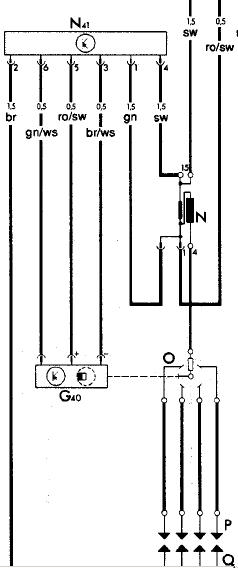
|
The watercooled VWs (Golf / Fox / etc) use a "TCI" ignition control module, with
a Hall Effect sensor in the distributor body, and a conventional-looking ignition
coil.
I received an email from Carlo W, who had managed to make this module work with conventional points on his V8 Land Rover, so I decided to investigate (I have a complete distributor / coil / TCI / loom lying around from a 1600 Fox we stripped). I broke the top off the TCI module and partially traced the schematic (it's a thick film hybrid module covered in a transparent sticky gel [429k picture]). It basically consists of what looks like a zener based voltage regulator for the Hall Effect sensor, a chip which does all the clever stuff, and a driver transistor for the coil. So yes, feeding a pulse similar to that coming from the Hall Effect sender into pin 6 will work. Now the question : Is the signal from a standard set of mechanical points close enough to that from the Hall Effect sensor? Carlo W said that his setup was giving too high a voltage (he claims a 5cm (that's 2&) spark), leading to arcing all over the place. He suspects this is because of the dwell time of the mechanical points. Question-du-jour : does the Hall Effect sender pulse duration vary with engine speed, like points, or is it a fixed-time pulse? If fixed-time, one should be able to build something with a 555 to make everything happy. How to test a Hall sensor (google translate is your friend) http://www.uoguelph.ca/~antoon/gadgets/555/555.html http://www.circuitdb.com/circuits/id/107 http://www.wipo.int/pctdb/en/wo.jsp?wo=1994008135&IA=WO1994008135&DISPLAY=DESC http://www.molla.org/DIY-CDI/SC-DIY-CDI-article-hires.pdf
|